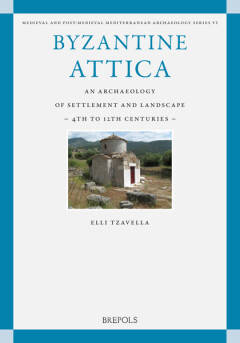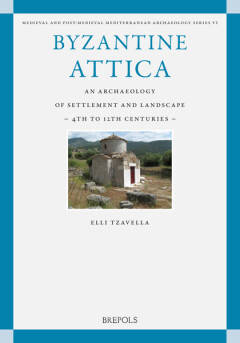
- Afhalen na 1 uur in een winkel met voorraad
- Gratis thuislevering in België vanaf € 30
- Ruim aanbod met 7 miljoen producten
- Afhalen na 1 uur in een winkel met voorraad
- Gratis thuislevering in België vanaf € 30
- Ruim aanbod met 7 miljoen producten
Zoeken
Byzantine Attica
An Archaeology of Settlement and Landscape (4th-12th Centuries)
Elli Tzavella
Paperback | Engels
€ 190,80
+ 381 punten
Omschrijving
Attica, the region which surrounds Athens (Greece) is a key area for understanding the transformation of the ancient Roman world to its Medieval successor in the eastern Mediterranean. Located at a crossroads for land and maritime communications, being well populated, carrying a thorough administrative organization and a heavy cultural and religious tradition, the region participated in the broader historic evolutions from the 4th to the 12th centuries. Moreover, Attica stands out in contemporary historic and archaeological research due to its very intensive field research, starting in the 19th century and culminating since the 1960s, through rescue excavation and systematic studies. The outcome of this multi-faceted research on field and monuments which concerns the 4th to 12th centuries forms the backbone of the present volume. Stepping beyond this compilation, however, this study proceeds into being a synthesis of evidence on settlement patterns, road communications, defensive works, religious activities and burial habits. These topics are underpinned by aspects which belong to the longue duree, geography and the natural environment, which are considered as crucial to the understanding of the Byzantine history. In short, the present book covers as many aspects of the studied area as possible, aiming to show the potential of regional studies for the history and archaeology of Late Antiquity and Byzantium.
Specificaties
Betrokkenen
- Auteur(s):
- Uitgeverij:
Inhoud
- Aantal bladzijden:
- 664
- Taal:
- Engels
Eigenschappen
- Productcode (EAN):
- 9782503611204
- Verschijningsdatum:
- 11/07/2024
- Uitvoering:
- Paperback
- Formaat:
- Trade paperback (VS)
- Gewicht:
- 1790 g

Alleen bij Standaard Boekhandel
+ 381 punten op je klantenkaart van Standaard Boekhandel
Beoordelingen
We publiceren alleen reviews die voldoen aan de voorwaarden voor reviews. Bekijk onze voorwaarden voor reviews.











